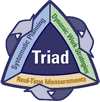
| Site Name | Shaw Air Force Base |
| Location | Sumter, SC |
| Site Type |
DoD Facility |
| Project Lead Type |
U.S. Air Force Lead |
| Reuse Objective Identified |
No |
In line with the U.S. Air Force (USAF) primary strategy for all Installation Restoration Projects (IRP) site processing - Remedy in Place (RIP) by 2012, the strategic objectives for this project were to:
During the course of this investigation using the Triad approach, trust was built among stakeholders through collaboration; the Field Sampling Plan was approved with out revision; field sampling showed that six previously suspected source areas were not sources; the location of the actual source was identified and characterized; and plumes were completely characterized during a single 6-month high-resolution site characterization (HRSC) field effort. This provided about $80K in direct cost reductions and an estimated $450K in cost avoidance.
Overall, using the Triad Approach resulted in about $80K in direct cost reductions and an estimated $450 K in cost avoidance. Time savings was estimated to be approximately two years.
A systematic planning session was held in February 2006 at Shaw AFB. Stakeholders included Shaw Environmental & Infrastructure, Shaw Air Force Base, USAF Air Combat Command (ACC), U.S. Army Corps of Engineers (USACE) Omaha, and South Carolina Department of Health and Environmental Control (DEHC).
The most difficult issue in development of the conceptual site model (CSM) was identifying the release area and plume migration pathways. Six potential release areas were investigated and eliminated. Using an HRSC approach of sampling transects, the actual release area was identified in an area where a water table aquifer recharges a deeper drinking water aquifer. The groundwater flows in opposite directions in these two aquifers, so the plumes extend in opposite directions. The CSM was presented in a Triad Team conference call prior to developing the work strategies. The CSM was a dynamic concept, and changes to the CSM were based on findings of the real-time measurements and agreed to during Triad conference calls during the field investigation. The six initial suspected release areas were eliminated from the CSM, and an agreement for no further investigation was reached during the field investigation during a Triad Team conference call.
Based on the initial CSM and agreed upon objectives, the details of the adaptive Field Sampling Plan were developed using a high-density data set of vertical groundwater samples and an on-site laboratory or a fixed-base lab using rapid turnaround to characterize the site in 3-D. Because the Triad Approach involved all stakeholders in work plan development, the work plan was approved without the need for revision.
The on-site laboratory produced preliminary data in less than one hour and high-quality data in 24-36 hours for the initial phase of the vertical groundwater profiling. The fixed-base laboratory provided rapid turnaround time (TAT) data in 48 hours during the second phase of the profiling.
Daily electronic data delivery (EDD) allowed immediate incorporation into a database, and an interactive Web-based map allowed downloading and review of the data by all stakeholders. High-resolution vertical groundwater profiling and on-site or rapid TAT sample analysis established contaminant distribution and concentrations in two aquifers over a 1.5-square-mile area. Using the project Web site, the project database was available to all project stakeholders using an interactive map. The database was updated as EDDs were received. A 3-D animated CSM was also available on the project Web site, and updated weekly, allowing stakeholders timely review. Weekly Triad Team conference calls that were held to review the latest CSM update, make decisions on where to sample next, and resolve other technical issues allowed the plumes to be effectively tracked, and agreements reached between all stakeholders regarding when characterization was complete.
To update this profile, contact Cheryl T. Johnson at Johnson.Cheryl@epa.gov or (703) 603-9045.